How do you maintain a Nescafe Dolce Gusto coffee machine?
Glad to hear that a Nescafe Dolce Gusto device has also found a place in your home!
Or are you planning to buy a Nescafé Dolce Gusto coffee machine and are you looking for information about the maintenance you need?
So that your machine can serve you delicious, effortlessly prepared drinks for many years, we have decided to explain the most important features of the maintenance of Nescafé Dolce Gusto machines. A clean and well-maintained machine not only brews excellent coffee, but it also stays part of your morning ritual for much longer than it would otherwise.
Nescafe Dolce Gusto Cleaning
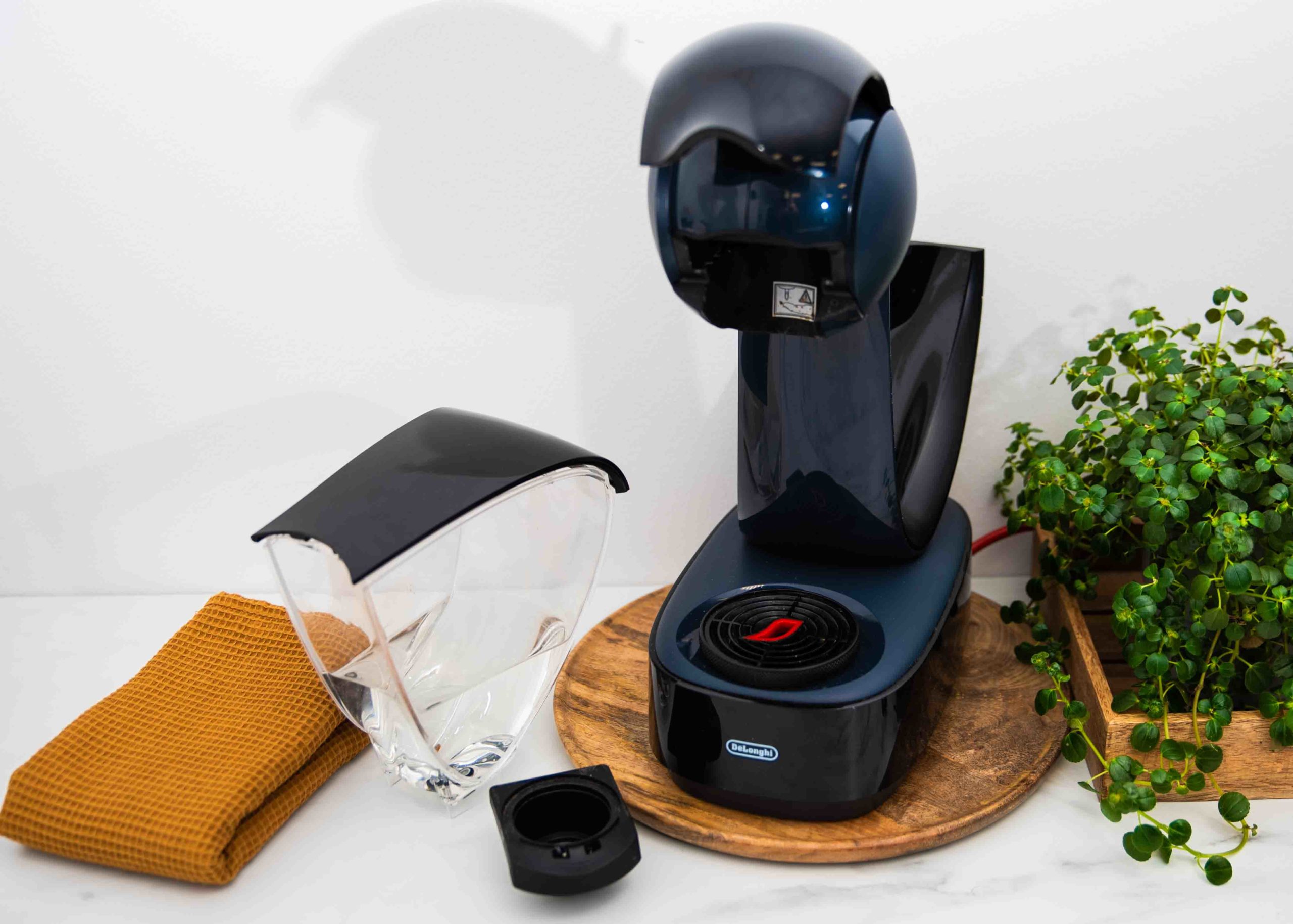
Each of us would like to enjoy a delicious cup of coffee now and then, and that is not possible without a clean and well-maintained coffee maker – the result in our cup is determined not only by the properties of the coffee capsules or the machine but also by their hygienic condition.
There is even a saying in the coffee world: Pay attention to the cleanliness of your coffee machine, and then you will know what coffee quality you can expect.
A clean machine makes drinking coffee much more pleasant, it gives you the real taste, not from old coffee residues and ensures that the aromatic drink stays the same every day.
The cleaning process can be divided into two phases: external cleaning and internal cleaning of the machine. The external cleaning of the machine includes the maintenance of the drip tray, the coffee capsule holder, the water capacity and the body of the machine.
These procedures should be done regularly every few days.
External cleaning of the coffee machine
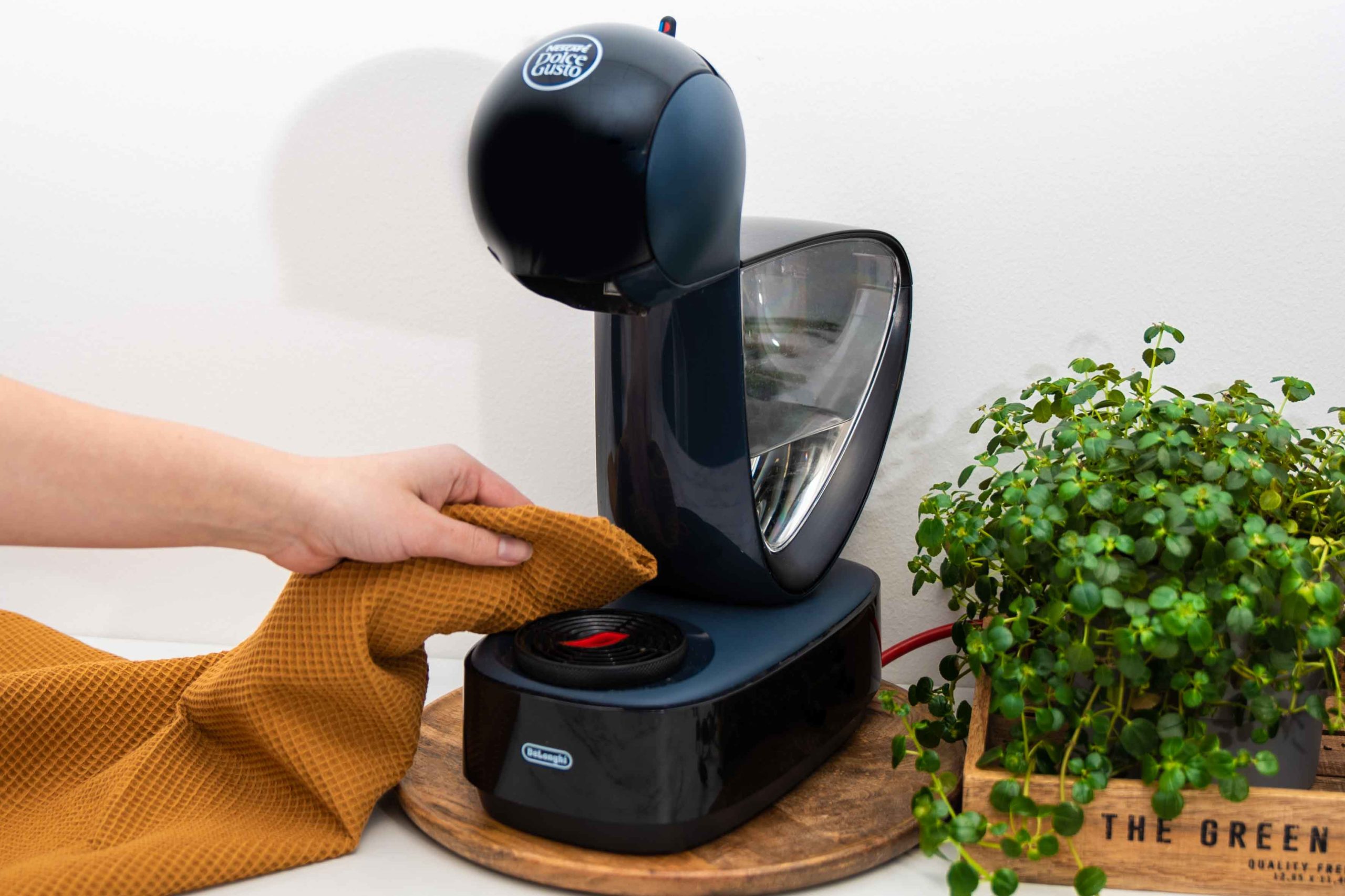
drip tray. The drip tray is the dirtiest part of the coffee maker, which is normal since its direct function is to collect the residue.
Even though the drip tray is not directly involved in the brewing process, cleaning it of coffee residue and sediment is important to maintain general hygiene. It is important to note that this bowl and its grid are not typically dishwasher safe unless otherwise stated in the instructions for your model of appliance.
Coffee capsule holder. Another important part of the Nescafe Dolce Gusto is the capsule holder.
It also needs to be rinsed regularly from both sides to ensure there is no residue from used coffee on the holder or dirt and dust from the outside. Good news for those in a hurry – this piece is dishwasher safe!
Water capacity.
Equally important is the water capacity of the coffee maker. The coffee consists of 98% water, so the rule “delicious water, delicious coffee” applies here.
The water used to prepare coffee must be fresh, colourless and odourless, so regular maintenance of this container is essential.
The water tank should be emptied and rinsed every few days without the water stagnating in the tank. Deposits and the ingress of dirt from the outside should be avoided. Unfortunately, this part of the machine is not dishwasher safe.
The housing of the coffee machine.
The external maintenance of the device is completed by the cleanliness of the case. Of course, a coffee maker is not only a functional device for preparing your favourite coffee drinks but also a piece of interior design that fills part of our living space.
A clean and sparkling machine can therefore be a perfect accent for any interior. The housing of the machine can be cleaned with a soft, damp cloth and then wiped with a dry kitchen towel.
Cleaning the inside of the coffee machine
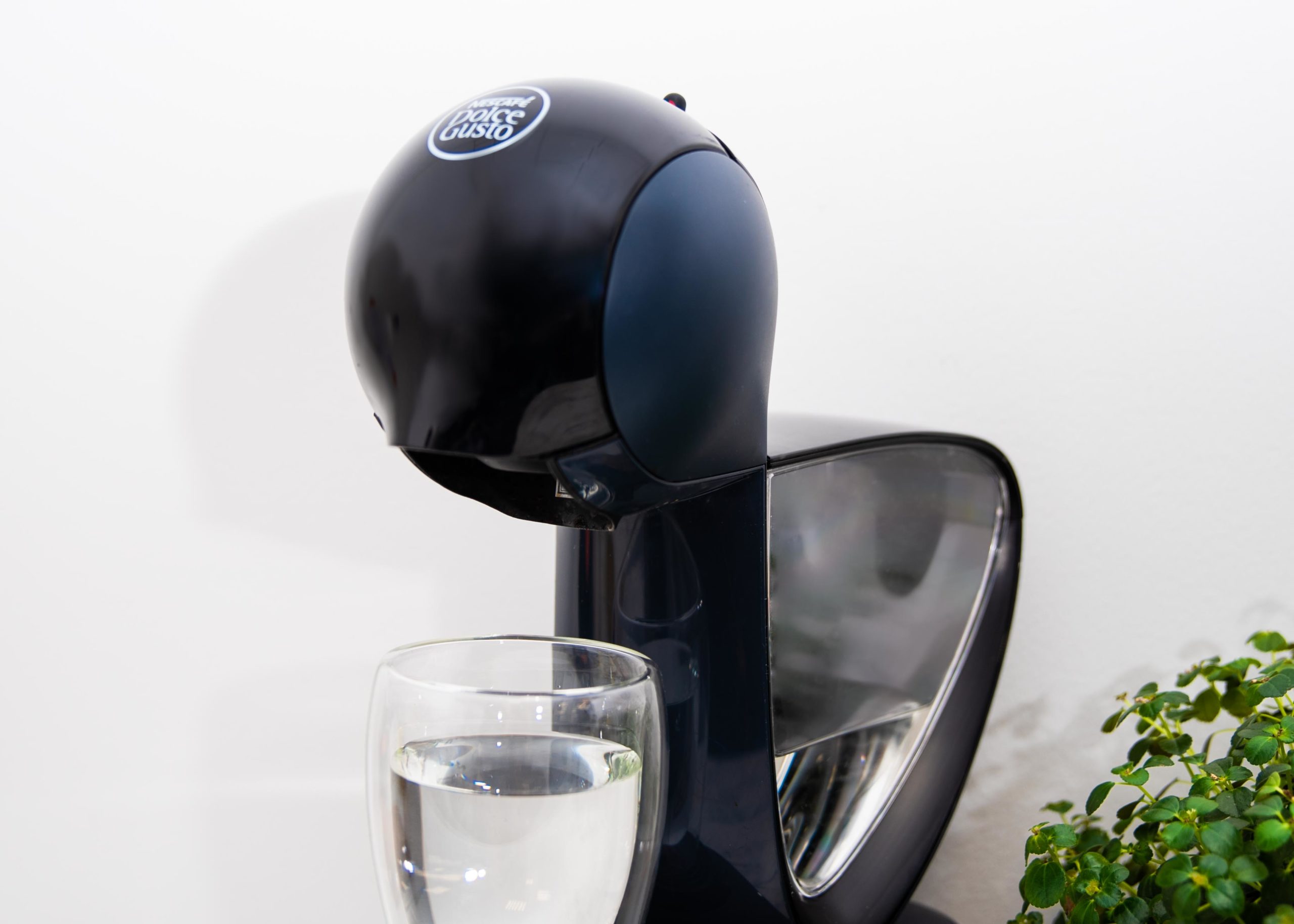
Cleaning the inside of the machine is essential to be able to enjoy a delicious coffee every time.
Cleaning is very easy and quick: you just have to rinse the internal system of the machine with water. The water removes fine coffee particles and dirt.
Of course, this will not remove the limescale deposits, but you will find out the best solution to this problem later. For simple cleaning of the machine, it is enough to rinse out a portion of hot water.
The entire cleaning process
To summarize the whole process of cleaning your Nescafe Dolce Gusto coffee maker, there are several steps you can follow every few days to ensure your machine lasts for many years to come.
- Clean the drip tray with a soft brush and dry with a clean towel. The dishwasher friendliness of this part depends on the specific model.
- Rinse the capsule holder from both sides and dry it. This part is dishwasher safe.
- Clean the water tank with a clean, soft brush suitable for food contact, rinse and dry with a clean cloth. Fill the water tank with fresh drinking water and put it back in the machine. The water tank is not dishwasher safe.
- Using a soft, damp cloth, wipe the top of the device around the piercing needle.
- Open the locking handle and insert the empty capsule holder. After closing the lid, place the empty container under the coffee funnel.
- Switch on the machine and after it has warmed up, move the selector lever to the hot water position – then the machine will start rinsing.
- After about 30-60 seconds, return the lever to the neutral position. If your machine can automatically adjust the amount of product dispensed (the amount of product can be selected from the control panel), set the water amount to the highest level and press the brew button. After flushing the system, empty the reservoir and dry it with a clean cloth.
- Switch off the device and unplug the power cord. Wipe the exterior of the device with a soft, damp cloth and then dry it.
These simple steps are enough to keep your capsule coffee maker clean so you can enjoy great-tasting coffee every day.
How to clean the Nescafe Dolce Gusto machine nozzle?
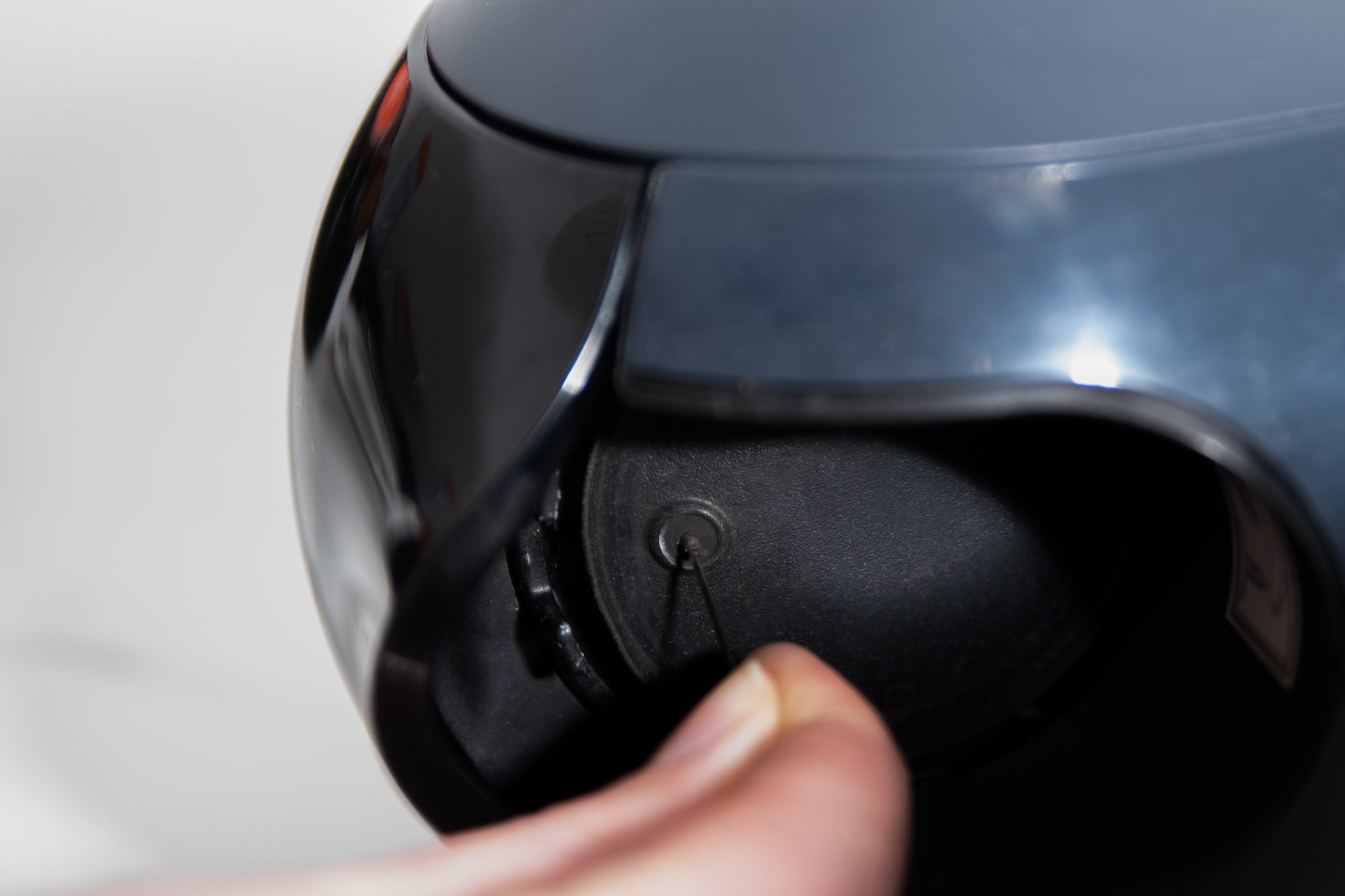
However, sometimes one forgets to clean the coffee maker in time, or even if it is perfectly maintained, there may be dripping coffee – as if the water had difficulty penetrating the ground coffee particles.
One possible reason for this is a clogged nozzle on a capsule coffee machine. When the needle pierces the capsule, the water flows out.
Dolce Gusto coffee makers have a great coffee nozzle that pours the coffee straight into our cup.
As the coffee flows through the nozzle each time it is brewed, you can imagine that a significant amount of coffee builds up on the walls of the nozzle.
If the nozzle is clogged, the coffee will come out with less pressure and a smaller amount will be produced.
However, Dolce Gusto has prepared for this problem and equipped the machine with a small needle, one end of which is twisted into a spiral. This needle is used to clean the coffee nozzle and can be “hidden” behind the water tank or on the shelf – the instructions for use will help you to find it.
cleaning process
- Firmly grasp the locking handle and remove the capsule holder.
- Throw away the used capsule (if inserted).
- Find the cleaning needle and close the locking handle.
- Unplug and tilt the unit to get a better view of the nozzle.
- Clean the nozzle with the cleaning needle.
Nescafe Dolce Gusto descaling
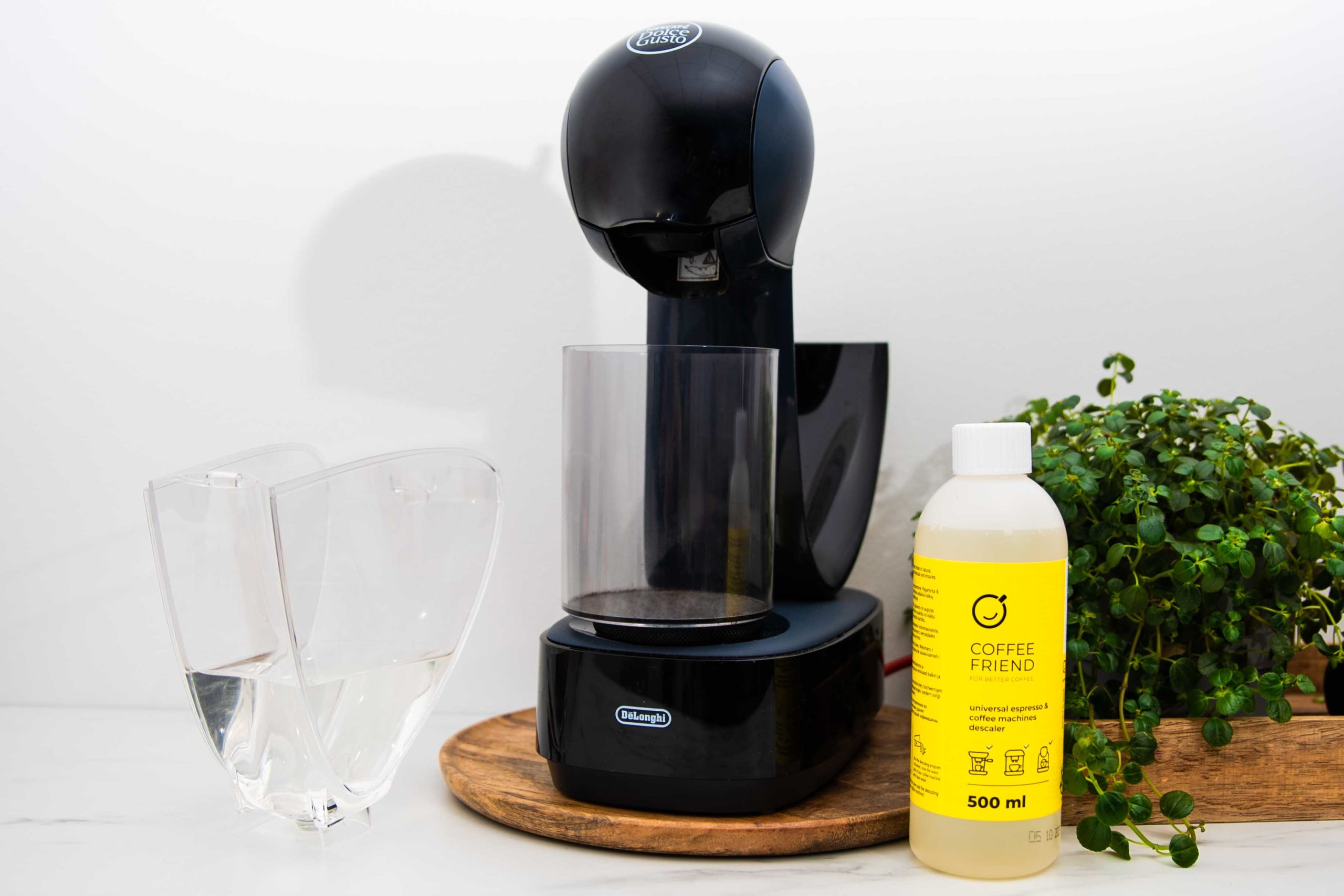
Limescale is often said to be the number one enemy of any appliance with a heating element that comes into contact with water.
In general, limescale is one of the most common causes of coffee machine failures and can lead to irreparable damage to the machine. Household limescale is a consequence of hard water:
This water is rich in soluble calcium and magnesium bicarbonates, which when heated break down into the water, carbon dioxide and insoluble carbonates.
The latter settle on the walls of the heating element and clog the water drainage system. It then takes longer to prepare a cup of coffee. This leads to higher energy consumption and higher maintenance costs.
An excess of lime also leads to a bad taste in the coffee: the pressure drop in the system does not bring out the full aroma of the coffee, and an excess of hard water ions can lead to a bad taste result due to the increased solubility of the substances.
When do you have to descale the Nescafe Dolce Gusto coffee machine?
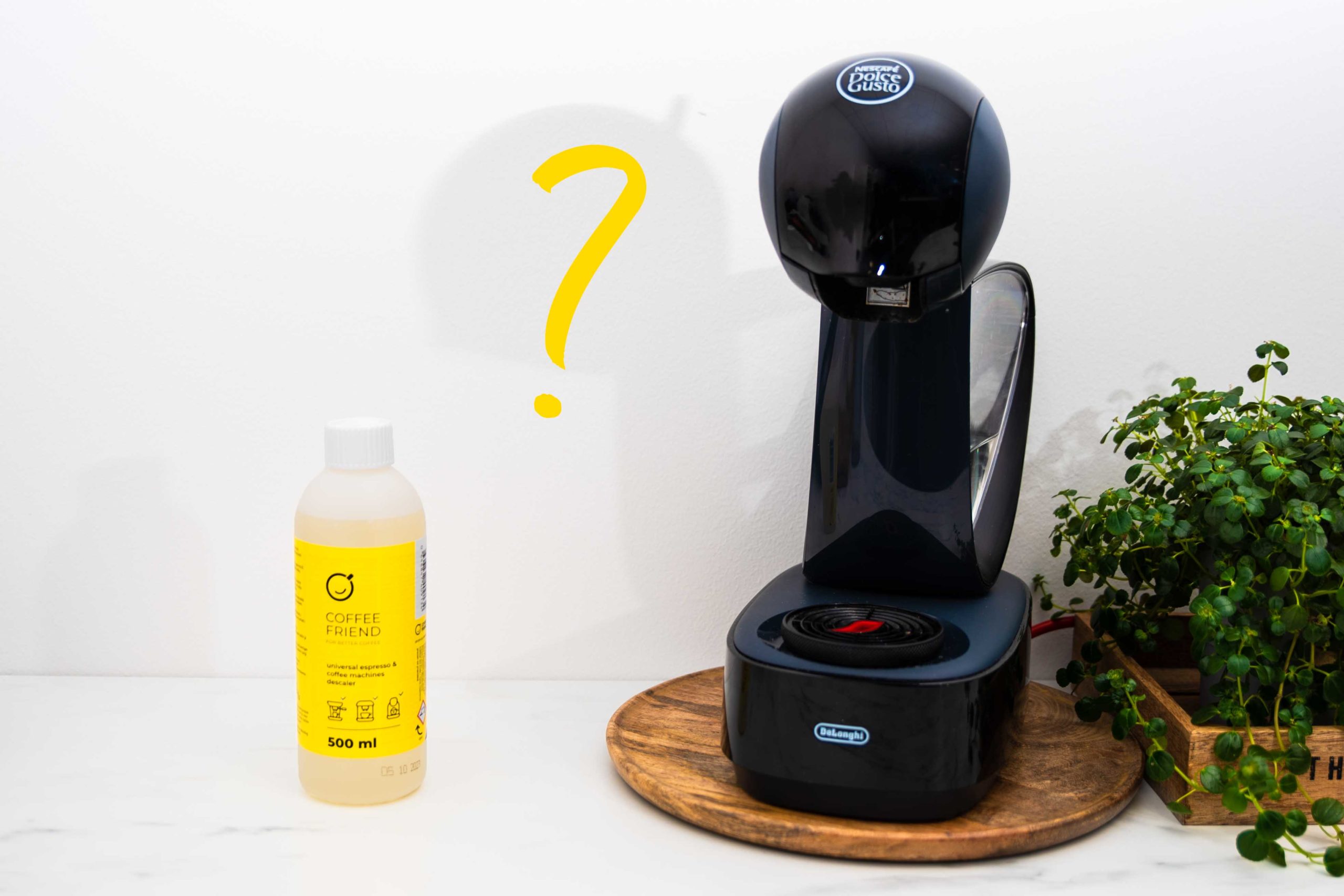
For the above reasons, it is very important to descale regularly. One of the most important questions is: When do you have to do it? Unlike other brands, Nescafe Dolce Gusto coffee machines used to not have an automatic system that tells you when you need to descale the coffee machine.
In recent years, however, models have been equipped with a descaling alarm, which is indicated either by a yellow-orange flashing of the power button or by a separate warning message.
Of course, several other important signals indicate that the coffee maker needs to be descaled as soon as possible:
- the drink is not as hot as it used to be;
- the taste of the coffee has changed when using the same capsules;
- little or no coffee comes out.
If you notice any of these signs of a clog, you should descale your coffee maker immediately. If there are no such signs and your machine does not have a built-in descaling warning, we recommend that you descale your coffee maker at least every 3 months.
All coffee machines are descaled using a similar procedure: the appropriate amount of descaling liquid is poured into the water tank or a descaling tablet is thrown in and the required amount of water is poured in.
During the descaling process, a mixture of special agents and water fills the machine’s water system until the solution finally – with a few pauses – runs out through the coffee spouts. When all the solution has been drained, the water tank must be thoroughly rinsed, refilled with clean water and the entire water system flushed.
Which descalers are best suited for Nescafé Dolce Gusto coffee machines?
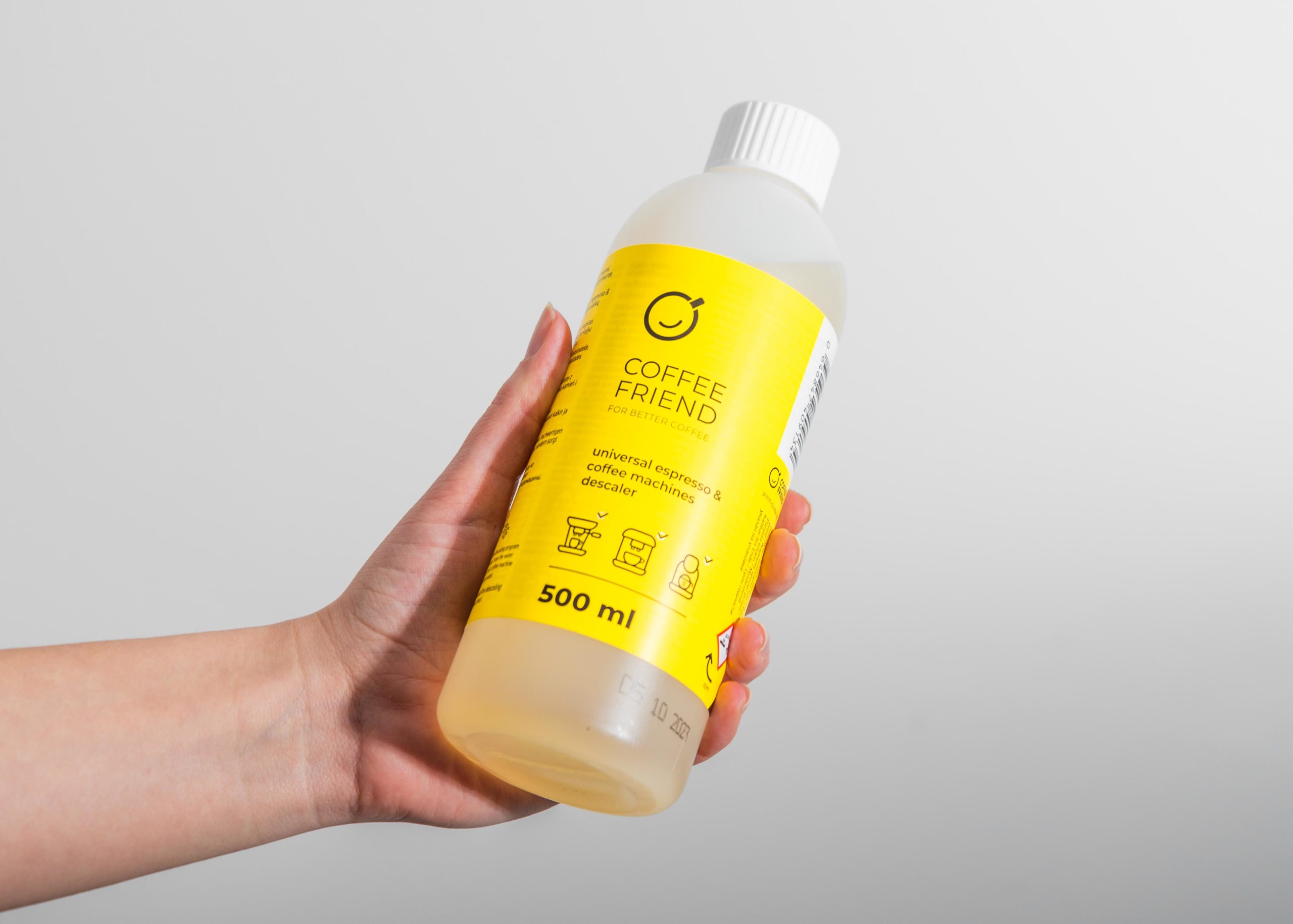
If you ask about products that can descaling the coffee machine, the first thing that comes to mind might be citric acid or acetic acid. It is commonly used to remove limescale from kettles or other household appliances and is good for that purpose too. However, citric or acetic acid is not recommended for descaling coffee machines. Why is that, you ask?
Well, to remove the limescale throughout a normal descaling process, the right concentration is required.
If your descaling solution is not strong enough, it may not be able to remove all of the scales inside the appliance.
On the other hand, if the solution is too strong, it can damage your coffee maker. The acid is particularly damaging to the rubber seals, and if they don’t do their job, your machine will start leaking.
We, therefore, recommend that you use descalers that have been specially developed for coffee machines and are tailored to their specific requirements.
Such products remove the limescale particularly efficiently, as part of a normal descaling process for the coffee machine. The universal descaler for coffee machines “For Better Coffee” is a good choice and is perfect for all Nescafé Dolce Gusto coffee machines.

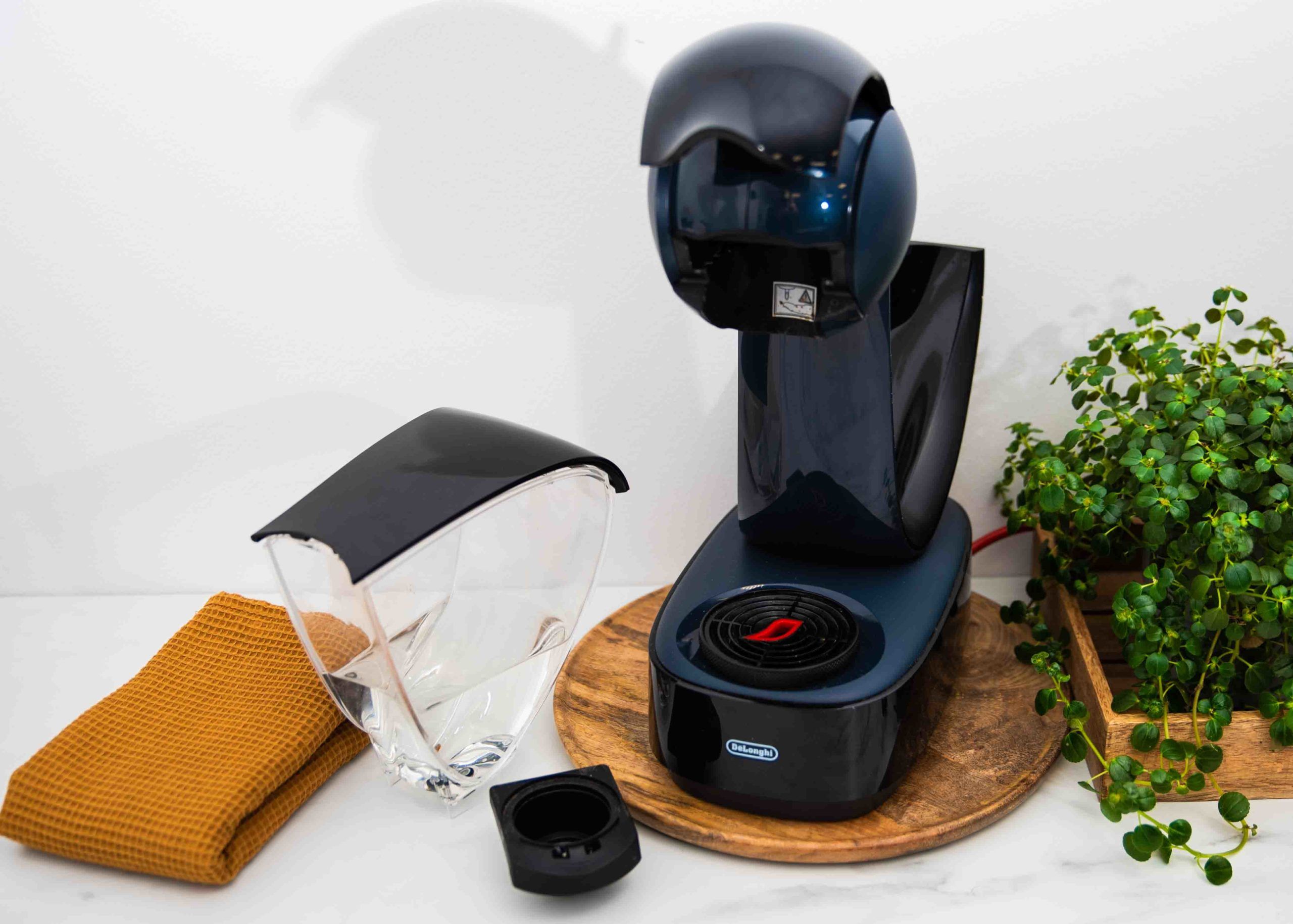

Comments are closed.